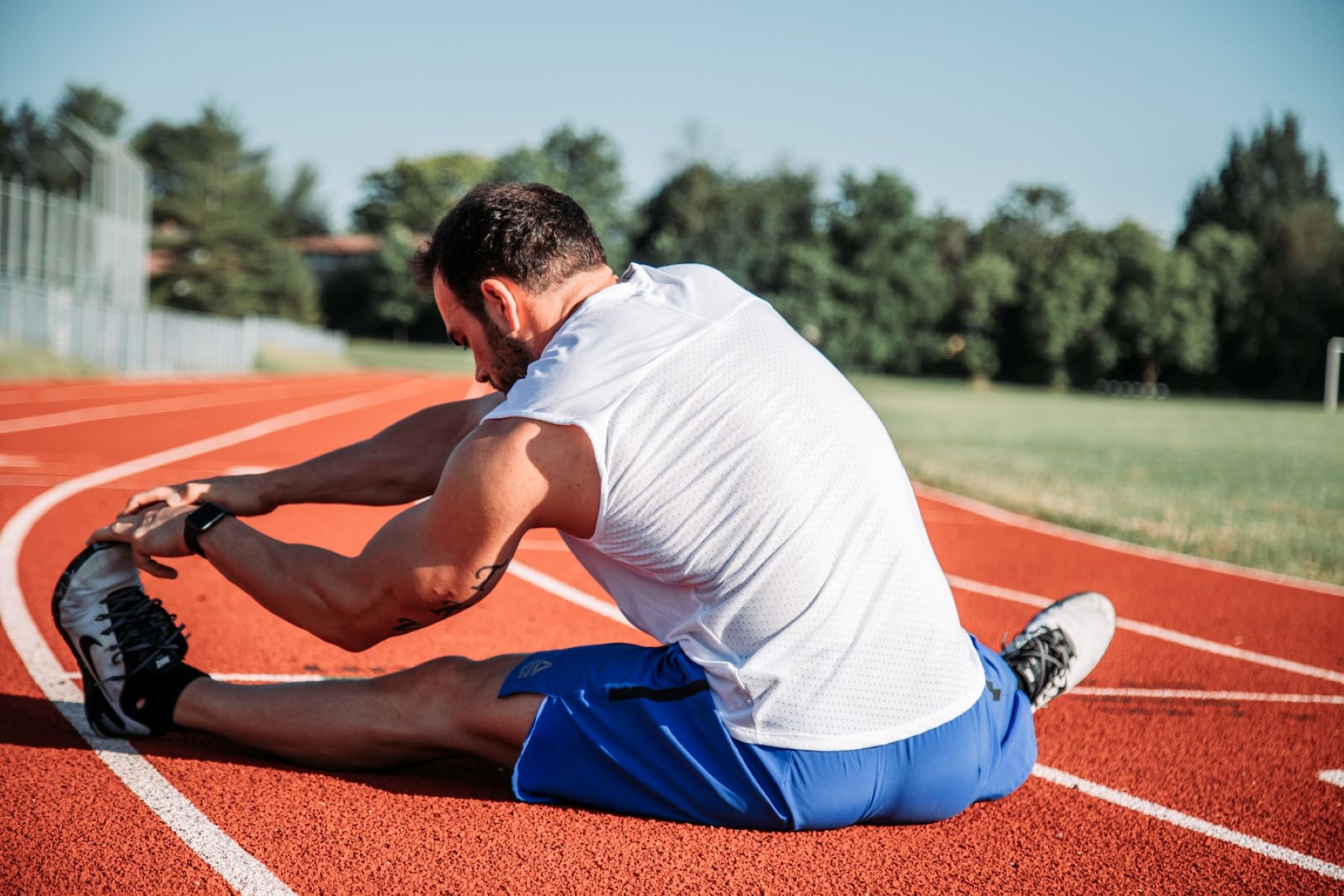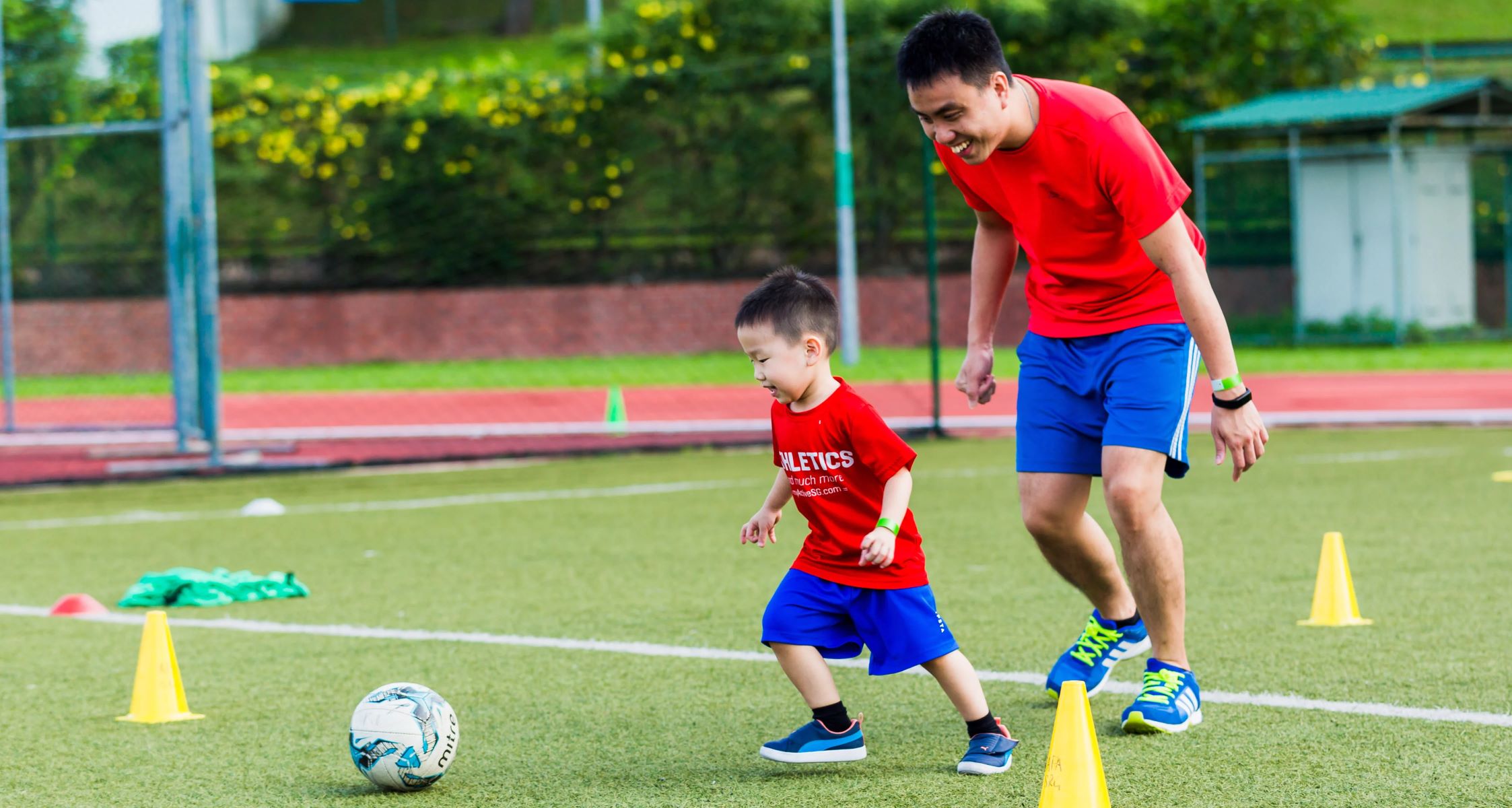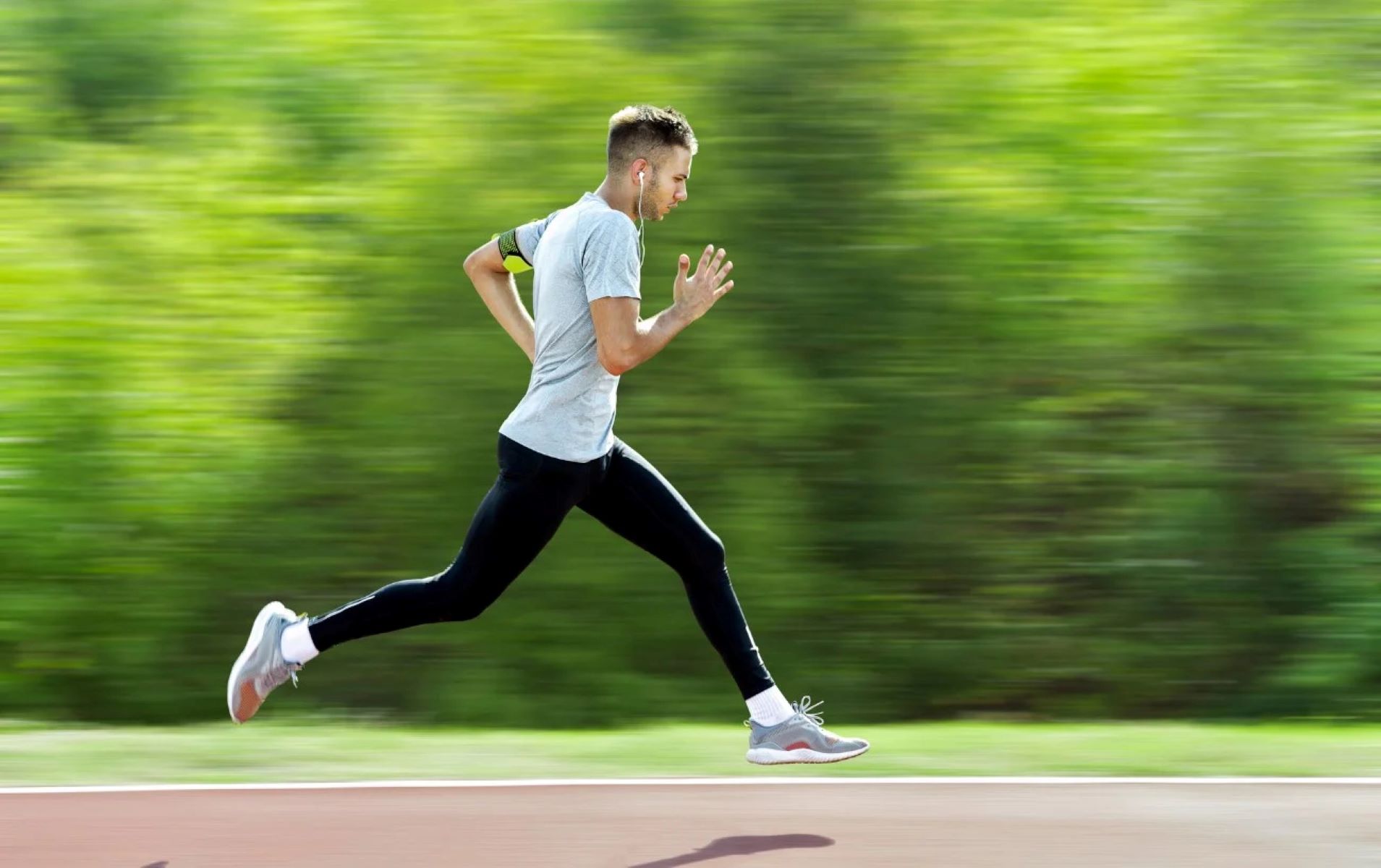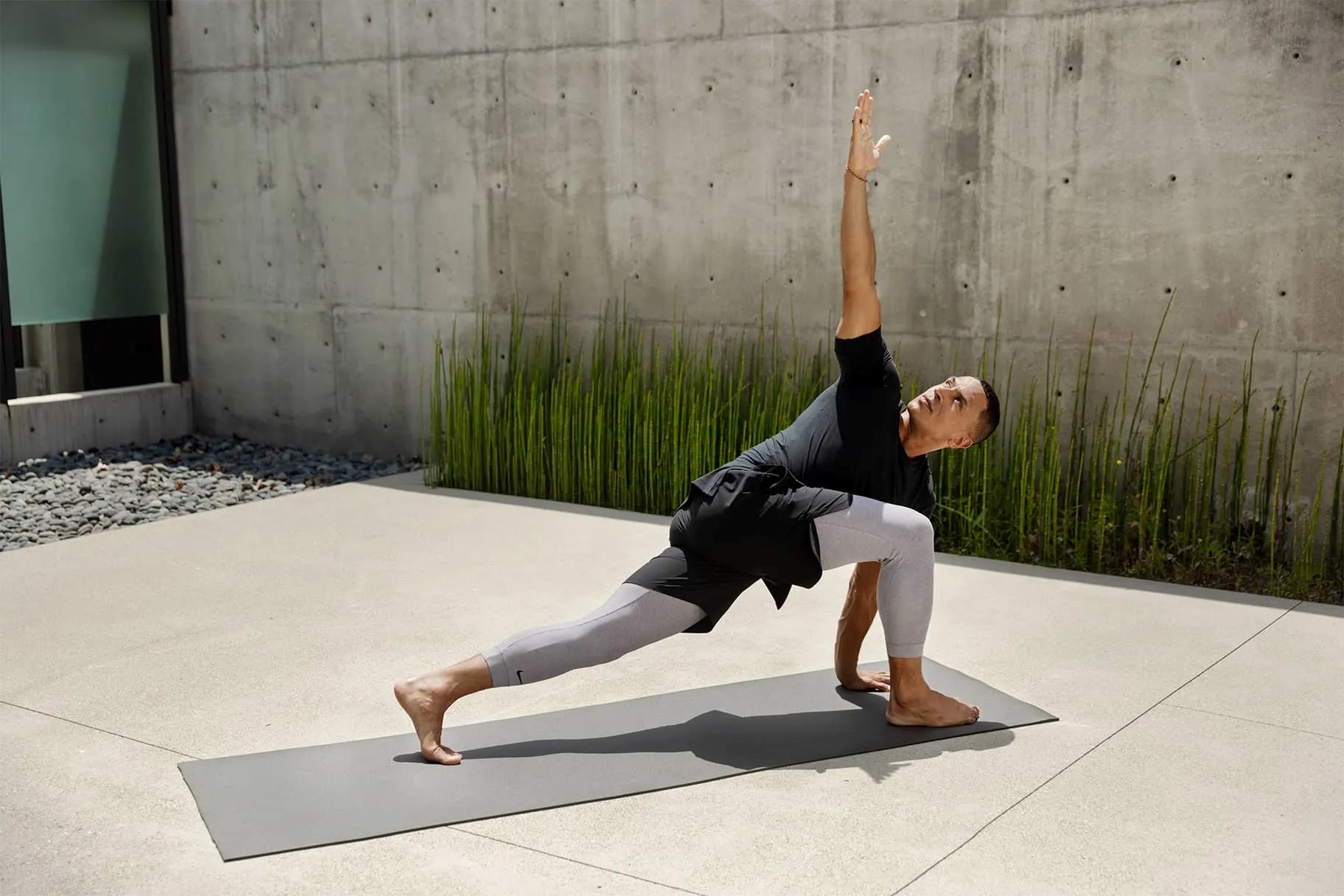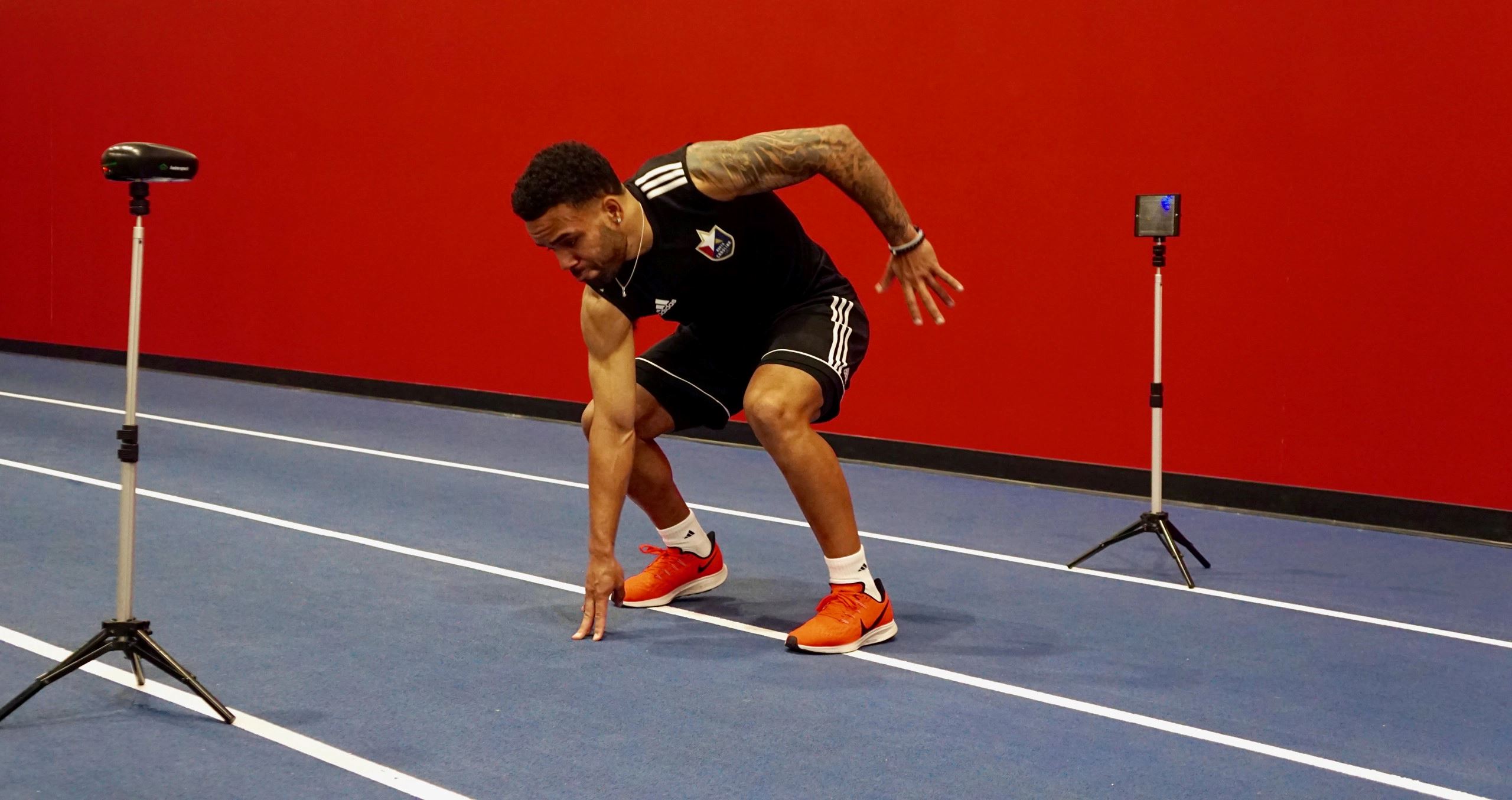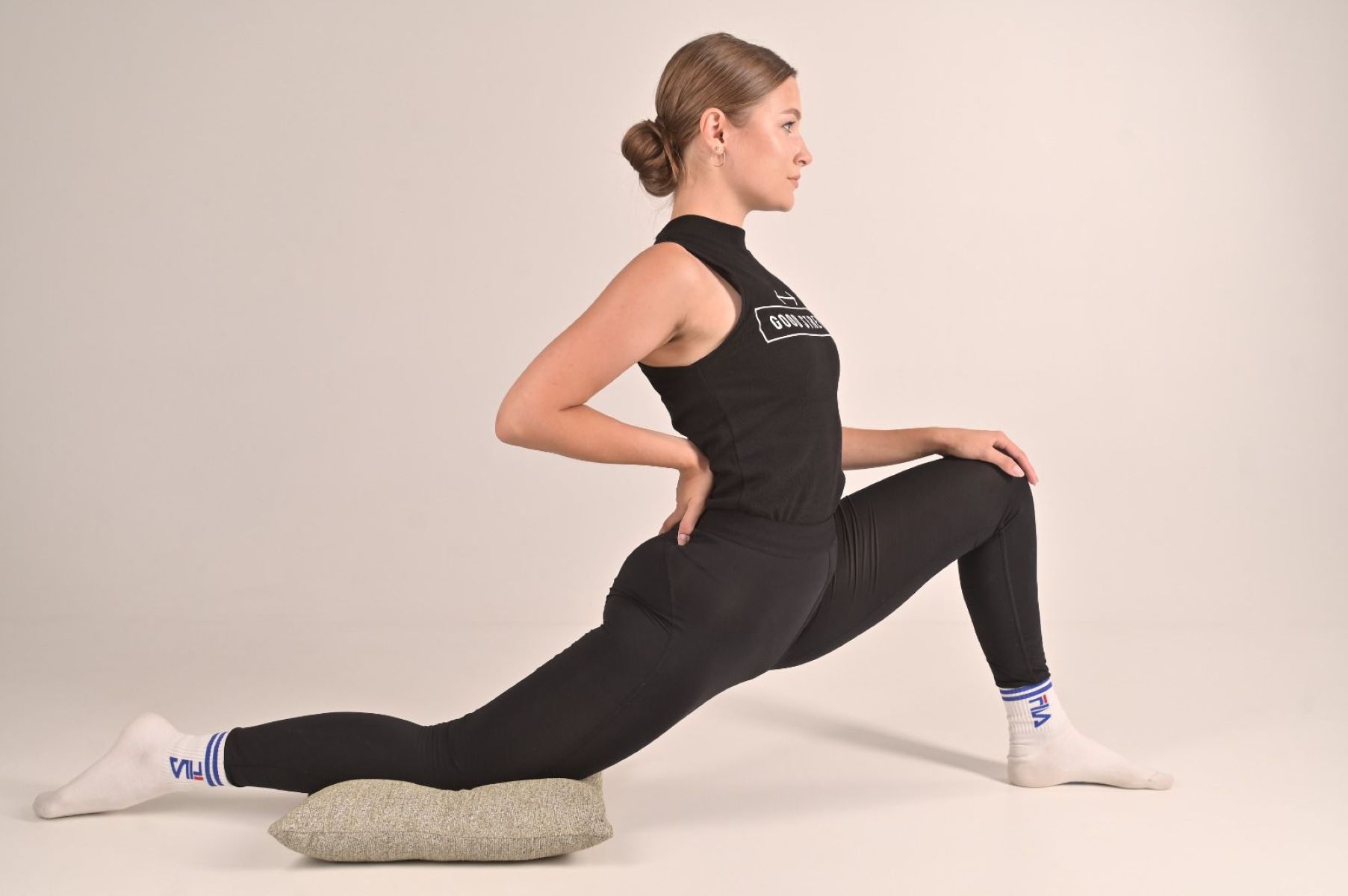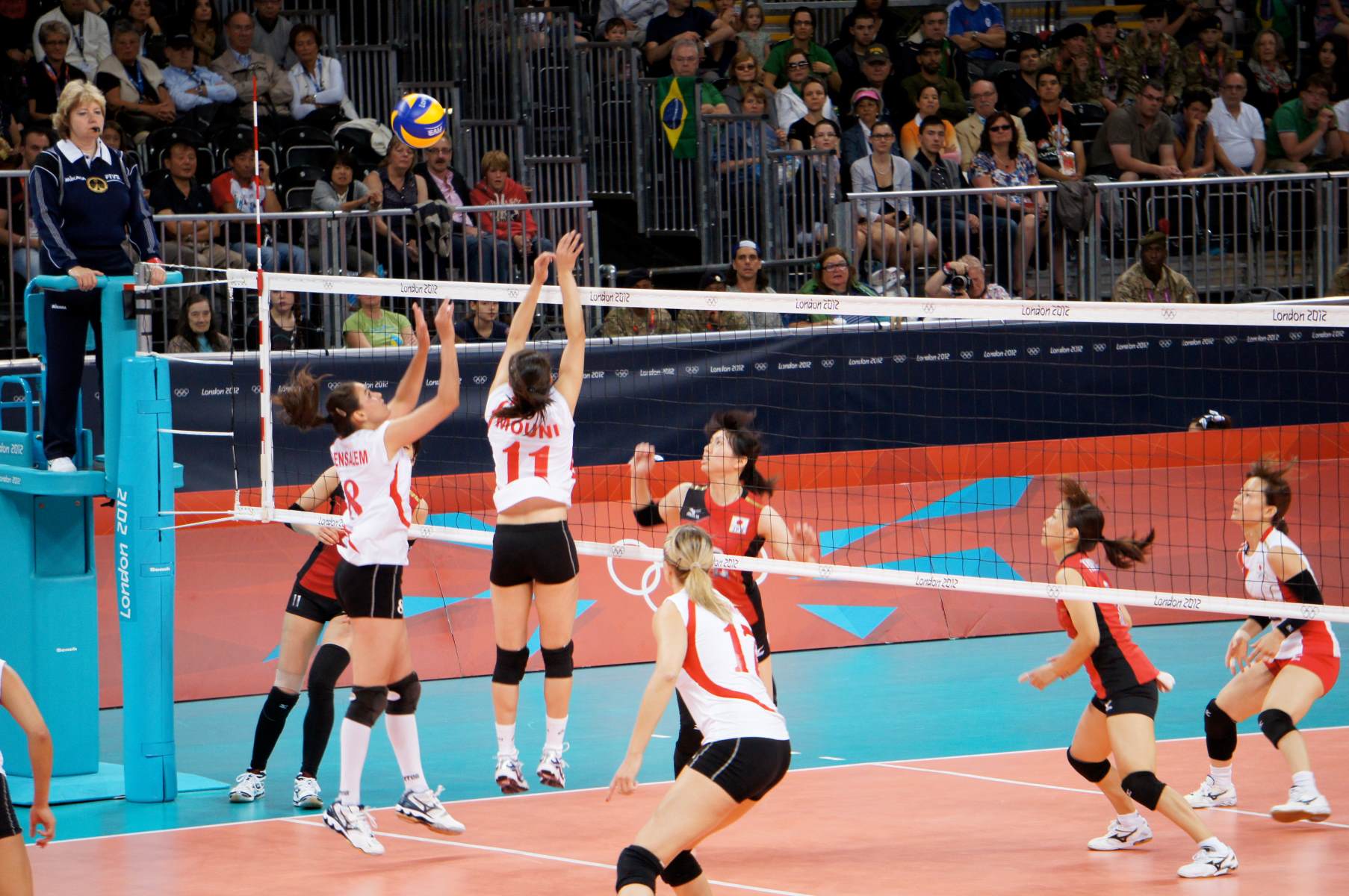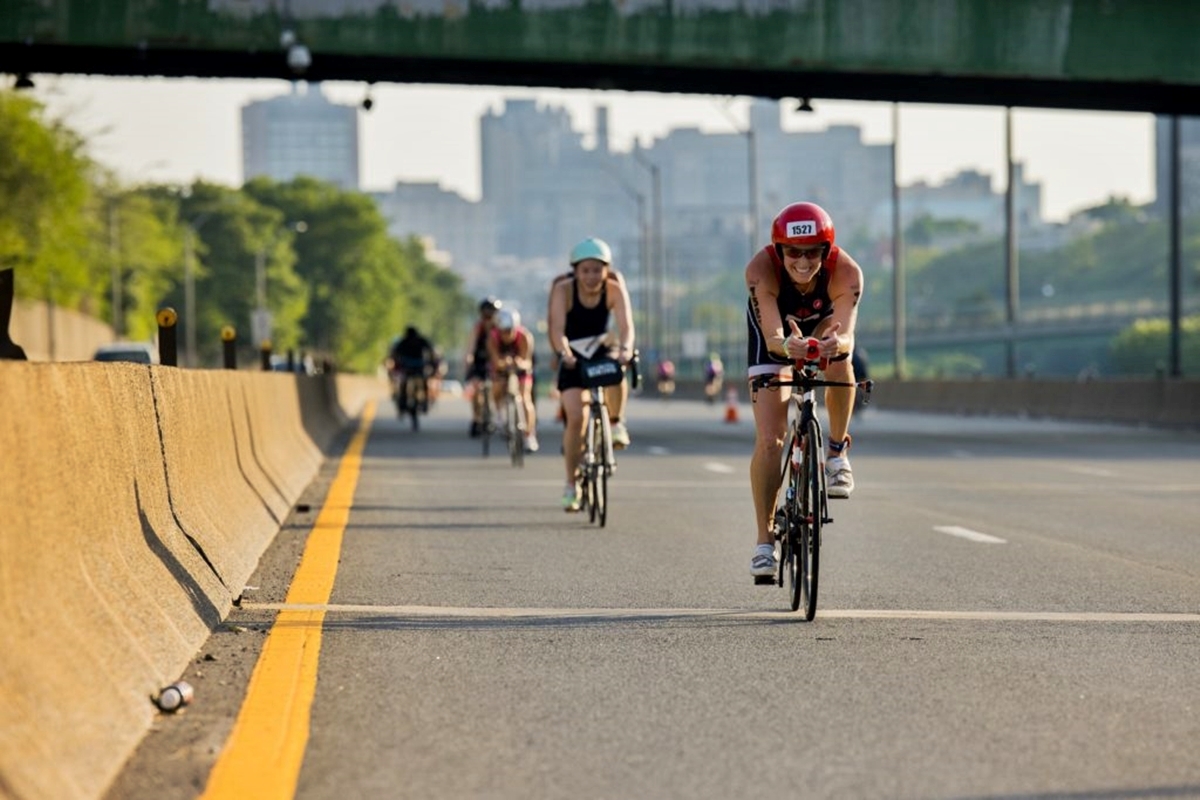Home>Misc>Featured>How Can The Stretch Reflex Be Used To Enhance Athletic Performance


Featured
How Can The Stretch Reflex Be Used To Enhance Athletic Performance
Modified: August 19, 2023
Discover how the stretch reflex, featured in athletic performance, can be optimized to enhance overall athletic abilities and achieve higher levels of success.
Introduction
The stretch reflex is a powerful physiological mechanism that plays a crucial role in enhancing athletic performance. Athletes across various disciplines have recognized the importance of utilizing this reflex to improve their speed, power, and overall athletic abilities. Understanding how the stretch reflex works and incorporating it into training programs can lead to significant gains and give athletes a competitive edge.
The stretch reflex, also known as the myotatic reflex, is a rapid and automatic response of the muscles to a stretching stimulus. It occurs when a muscle lengthens rapidly, activating a sensory receptor called the muscle spindle. This triggers a reflex arc that results in the muscle contracting involuntarily, providing a forceful response.
The stretch reflex is an essential component of the neuromuscular system’s protective mechanism. It helps maintain muscle tone, stability, and coordination, preventing excessive stretch and potential injury. However, it can also be harnessed to generate powerful muscular contractions, leading to enhanced athletic performance.
By taking advantage of the stretch reflex, athletes can tap into a greater potential for speed, explosiveness, and strength. The elastic energy stored in tendons during the stretching phase is released during the contraction phase, resulting in a more forceful muscle contraction.
In this article, we will explore the mechanisms of the stretch reflex and delve into how it can be effectively used to enhance athletic performance. We will also discuss various training methods that can help optimize the stretch reflex and provide practical applications for athletes to implement in their training routines.
It is important to note that while the stretch reflex is an effective tool for improving athletic performance, it is not a standalone solution. Physical conditioning, technique, and other factors also play critical roles in overall athletic development. By incorporating the stretch reflex into a holistic training approach, athletes can maximize their potential and perform at their best.
Understanding the stretch reflex
The stretch reflex is a fundamental physiological response that occurs when a muscle is passively stretched. It is an involuntary reaction that involves the activation of sensory receptors in the muscle, which then triggers a reflex arc resulting in muscle contraction. This reflex plays a crucial role in maintaining muscle tone, stability, and coordination.
The primary sensory receptor involved in the stretch reflex is called the muscle spindle. Muscle spindles are specialized sensory organs that are embedded within the muscle fibers. When a muscle is stretched, the muscle spindles detect the change in muscle length and transmit signals to the spinal cord.
Once the signals reach the spinal cord, they are processed by the central nervous system. In response, motor neurons are activated, and impulses are sent back to the muscle, causing it to contract. This reflex arc occurs rapidly and automatically, often without conscious effort or awareness.
The stretch reflex acts as a protective mechanism for the body. It helps prevent excessive stretching of muscles, which could potentially lead to injury. For example, if you accidentally step on a slippery surface, your leg muscles will quickly contract in response to the rapid stretching of the muscles, preventing you from falling and injuring yourself.
However, the stretch reflex can also be harnessed and utilized to enhance athletic performance. By understanding the mechanisms behind the stretch reflex, athletes can take advantage of this powerful reflex to improve their speed, power, and explosiveness.
When a muscle is rapidly stretched, elastic energy is stored in the tendons. This stored energy can be released during the subsequent muscle contraction, resulting in a more forceful and powerful contraction. This phenomenon is known as the plyometric effect or the stretch-shortening cycle.
During activities such as jumping or throwing, the stretch reflex and the stretch-shortening cycle play a vital role. The rapid stretch of muscles activates the stretch reflex, which triggers a stronger and more explosive contraction, allowing athletes to generate greater power.
Having a thorough understanding of the stretch reflex is essential for athletes and coaches. By incorporating specific training methods and exercises that focus on utilizing the stretch reflex, athletes can optimize their performance and achieve their athletic goals.
Mechanisms of the stretch reflex
The stretch reflex is a complex physiological process that involves multiple mechanisms working together to produce a rapid and efficient muscle contraction. Understanding these mechanisms can help athletes and coaches optimize the use of the stretch reflex in athletic performance.
When a muscle is stretched, sensory neurons within the muscle spindle are activated. The muscle spindle detects changes in muscle length and sends signals to the spinal cord via sensory nerve fibers. These signals reach the spinal cord, where they are relayed to the motor neurons responsible for muscle contraction.
The first mechanism involved in the stretch reflex is the monosynaptic reflex arc. This refers to the direct connection between the sensory neurons in the muscle spindle and the motor neurons in the spinal cord. This direct connection allows for a rapid response, with minimal delay, making the stretch reflex a quick automatic reaction.
Once the sensory signals reach the spinal cord, they activate the alpha motor neurons, which in turn stimulate the corresponding muscle fibers to contract. This activation of motor neurons leads to the generation of a muscle contraction, which counters the stretch and stabilizes the muscle.
Another important mechanism of the stretch reflex is reciprocal inhibition. Reciprocal inhibition refers to the simultaneous activation of the agonist (stretched) muscle and the inhibition of the antagonist (opposing) muscle. This mechanism allows for efficient movement and prevents unwanted muscle interference.
Reciprocal inhibition helps coordinate muscle actions, ensuring that the desired muscle is activated while the opposing muscle is relaxed. This allows for smoother and more coordinated movements, enhancing performance in activities like running, jumping, and throwing.
In addition to the monosynaptic reflex arc and reciprocal inhibition, the stretch reflex is also influenced by other factors. One such factor is the sensitivity of the muscle spindles. The sensitivity of the muscle spindles determines how easily they are activated by stretching stimuli. Training and conditioning can increase the sensitivity of muscle spindles, leading to a more robust and responsive stretch reflex.
Furthermore, the stretch reflex can be modulated by higher brain centers and sensory input. The involvement of the brain allows for voluntary control over the stretch reflex, enabling athletes to optimize its use for specific movements and tasks.
Overall, the stretch reflex operates through a combination of mechanisms, including the monosynaptic reflex arc, reciprocal inhibition, muscle spindle sensitivity, and modulation by higher brain centers. By understanding these mechanisms, athletes can work on developing and refining their stretch reflex to enhance their athletic performance.
Benefits of Utilizing the Stretch Reflex in Athletics
The stretch reflex offers a wide range of benefits for athletes who incorporate it into their training and performance strategies. By harnessing the power of the stretch reflex, athletes can experience improvements in speed, power, and overall athletic performance. Here are some key benefits of utilizing the stretch reflex in athletics.
1. Increased Power: The stretch reflex allows for a more forceful and explosive muscle contraction. When a muscle is rapidly stretched, elastic energy is stored in the tendons. This stored energy is then released during the subsequent muscle contraction, resulting in a more potent force production. By activating the stretch reflex, athletes can tap into this reservoir of energy and generate greater power in movements such as jumping, sprinting, and throwing.
2. Enhanced Speed: The stretch reflex enables athletes to generate rapid and powerful muscular contractions, leading to an increase in speed. By utilizing the stretch reflex, athletes can improve their acceleration and top speed, enhancing their performance in sports that require fast movements and quick bursts of speed, such as track and field events, soccer, and basketball.
3. Improved Agility and Reactive Ability: The stretch reflex plays a vital role in rapid changes of direction and reactive movements. By taking advantage of the reflexive nature of the stretch reflex, athletes can quickly adjust their movements based on sensory inputs, allowing for improved agility and responsiveness on the field or court. This can be particularly beneficial in sports such as tennis, basketball, and soccer, where quick changes of direction and rapid reactions are essential.
4. Injury Prevention: The stretch reflex is a protective mechanism that helps prevent excessive muscle stretching, reducing the risk of injuries. By enhancing the stretch reflex, athletes can improve their ability to maintain muscle tone and stability, reducing the likelihood of strains, tears, and other musculoskeletal injuries. This is particularly relevant in sports with high impact, repetitive motions, and sudden changes in direction.
5. Efficient Movement: The stretch reflex, along with its mechanism of reciprocal inhibition, allows for coordinated muscle actions and efficient movement patterns. By optimizing the stretch reflex, athletes can improve their movement efficiency, reducing unnecessary muscle interference and maximizing the force production of the desired muscle groups. This can lead to better technique, smoother movements, and improved overall performance.
6. Psychological Boost: Incorporating the stretch reflex into training programs can provide athletes with a psychological boost. The explosive and rapid nature of the stretch reflex can instill a sense of confidence and power in athletes, enhancing their mental state and motivation. This psychological advantage can translate into improved performance and a competitive edge.
By understanding and utilizing the stretch reflex, athletes can tap into its numerous benefits to enhance their performance in various sports. However, it is important to note that proper training and technique are crucial for effectively harnessing the stretch reflex and minimizing the risk of injury. Working with a qualified coach or trainer can help athletes incorporate the stretch reflex into their training programs in a safe and effective manner.
Training Methods to Enhance the Stretch Reflex
There are several effective training methods athletes can utilize to enhance the stretch reflex and optimize its benefits. These methods focus on improving muscle spindle sensitivity, maximizing the stretch-shortening cycle, and developing neuromuscular coordination. By incorporating these training techniques, athletes can enhance their performance and tap into the full potential of the stretch reflex.
1. Plyometric Training: Plyometric exercises involve rapid stretching and contracting of muscles, making them highly effective for enhancing the stretch reflex. Jumping exercises, depth jumps, and medicine ball throws are examples of plyometric exercises that allow athletes to generate explosive power by utilizing the stretch-shortening cycle. Incorporating plyometric training into a regular training routine can improve reaction time, power output, and overall athletic performance.
2. Dynamic Stretching: Dynamic stretching involves moving through a full range of motion with controlled movements. By incorporating dynamic stretching exercises before a workout or a competition, athletes can activate the stretch reflex and prepare their muscles for optimal performance. Exercises such as leg swings, arm circles, and walking lunges can be used to dynamically stretch and activate the major muscle groups.
3. Proprioceptive Neuromuscular Facilitation (PNF) Stretching: PNF stretching is a technique that combines passive stretching with isometric contractions to enhance both the flexibility and the stretch reflex. By incorporating isometric contractions during the stretching phase, PNF stretching can increase muscle spindle activation and improve its effectiveness. This training method involves partner-assisted stretching to achieve greater gains in flexibility and neuromuscular coordination.
4. Reactive Training: Reactive training involves incorporating reactive movements that require quick changes of direction or responses to external stimuli. This type of training helps athletes develop fast-twitch muscle fibers, improve neuromuscular coordination, and enhance reactive ability. Reactive drills such as agility ladder exercises, cone drills, and reactive ball drills can be incorporated into training sessions to simulate game-like situations and challenge the stretch reflex.
5. Eccentric Training: Eccentric training focuses on the controlled lengthening (eccentric) phase of muscle contractions. This type of training places a strong emphasis on activating the stretch reflex during the eccentric phase, maximizing the utilization of the stretch-shortening cycle. Eccentric exercises, such as eccentric squats, eccentric hamstring curls, and eccentric calf raises, can be included in training programs to target specific muscle groups and improve stretch reflex activation.
6. Balance and Stability Training: Developing balance and stability is crucial for optimal stretch reflex activation and overall athletic performance. Balance exercises that challenge proprioception and stability, such as single-leg exercises, Bosu ball variations, and stability board drills, can help improve muscle spindle sensitivity and enhance neuromuscular control. These exercises can be incorporated into warm-up routines or as standalone exercises to improve balance and stability.
It is important to note that these training methods should be implemented gradually and under the guidance of a qualified coach or trainer. It is recommended to start with lower-intensity exercises and gradually progress to more demanding movements to avoid overstimulation or injury.
By incorporating these training methods into their routine, athletes can enhance the stretch reflex, improve muscular performance, and achieve their full athletic potential.
Practical Applications of the Stretch Reflex in Athletic Performance
The stretch reflex has numerous practical applications in athletic performance across various sports and activities. Understanding how to effectively utilize the stretch reflex can enhance an athlete’s speed, power, and overall performance. Here are some practical applications of the stretch reflex in athletic performance:
1. Sprinting and Acceleration: The stretch reflex plays a pivotal role in sprinting and acceleration. By training to optimize the stretch reflex, athletes can generate more powerful muscle contractions and improve their starting speed. By incorporating plyometric exercises and explosive movements into their training, athletes can enhance the stretch-reflex-mediated power output, leading to faster sprints and quicker acceleration.
2. Jumping and Explosiveness: The stretch reflex is highly beneficial for vertical jump performance and overall explosiveness. By incorporating plyometric training, which focuses on rapid stretching and powerful contractions, athletes can tap into the stretch-shortening cycle and increase their jump height and explosiveness. The stretch reflex helps athletes generate more force from the stretch of the muscle, resulting in higher jumps and improved athletic performance in sports such as basketball and volleyball.
3. Change of Direction and Agility: The stretch reflex contributes to enhanced agility and quick changes in direction. By improving muscle spindle sensitivity and neuromuscular coordination through reactive training and proprioceptive exercises, athletes can capitalize on the stretch reflex during rapid changes of direction. This allows them to be more agile, responsive, and capable of evading opponents or maneuvering through tight spaces in sports like soccer, tennis, and basketball.
4. Throwing and Striking: The stretch reflex is crucial for generating power in throwing and striking movements. By incorporating plyometric exercises and focusing on proper technique, athletes can optimize the stretch reflex to generate explosive power and speed during throwing or striking actions. The elastic energy stored in the tendons during the stretch phase can be released during the contraction phase, leading to faster and more forceful movements in sports such as baseball, tennis, and martial arts.
5. Injury Prevention and Rehabilitation: The stretch reflex also plays a role in injury prevention and rehabilitation. A properly functioning stretch reflex helps maintain muscle tone and stability, reducing the risk of strains, tears, and other injuries. Athletes recovering from injuries can focus on enhancing the stretch reflex to regain strength and improve muscle function during rehabilitation exercises. This can aid in a safe and effective return to sports participation.
6. Overall Performance Enhancement: By incorporating training methods that focus on optimizing the stretch reflex, athletes can enhance their overall athletic performance. The stretch reflex contributes to increased power, speed, and coordination, which are essential in various sports. By working with qualified coaches and trainers and integrating appropriate training techniques, athletes can leverage the stretch reflex to enhance their performance across multiple facets of their chosen sport.
It is important for athletes to recognize the specific practical applications of the stretch reflex in their respective sports and disciplines. By tailoring their training programs to incorporate exercises and techniques that optimize the stretch reflex, athletes can tap into this powerful mechanism, maximizing their athletic potential and achieving their performance goals.
Common Misconceptions about the Stretch Reflex
The stretch reflex is a fascinating physiological mechanism, but it is often surrounded by misconceptions and misunderstandings. These misconceptions can lead to ineffective training approaches and missed opportunities for athletes to fully capitalize on the benefits of the stretch reflex. Here are some common misconceptions about the stretch reflex:
1. Stretching alone is sufficient to enhance the stretch reflex: One common misconception is that simply stretching a muscle is enough to maximize the stretch reflex. While stretching is important for maintaining muscle flexibility and joint range of motion, it is only one component of optimizing the stretch reflex. Incorporating specific training methods, such as plyometrics and reactive drills, that target the stretch reflex is crucial for fully harnessing its benefits.
2. The stretch reflex can only be enhanced through extreme stretching: Another misconception is that extreme stretching is necessary to initiate a strong stretch reflex response. While a certain amount of stretch is required to activate the reflex, excessive stretching can actually inhibit the stretch reflex. Finding the optimal balance between stretch length and intensity is essential for maximizing the effectiveness of the stretch reflex in athletic performance.
3. The stretch reflex can be fully controlled: Although athletes can influence the stretch reflex to some extent, it is important to recognize that it operates as an automatic and involuntary response. While training can enhance muscle spindle sensitivity and neuromuscular coordination, athletes cannot fully control the reflex in every situation. Understanding how to tap into the reflex for specific movements and activities can help athletes better utilize its potential.
4. Stretching before exercise always enhances the stretch reflex: There is a misconception that static stretching before exercise always enhances the stretch reflex and improves performance. However, static stretching can actually decrease muscle power output and may not be the most effective method for activating the stretch reflex. Dynamic stretching and specific warm-up exercises that incorporate explosive movements are often more beneficial for optimizing the stretch reflex prior to exercise.
5. The stretch reflex is solely responsible for increased strength: While the stretch reflex can contribute to increased strength and power, it is not the sole factor responsible for strength gains. Strength development also depends on other factors such as muscle size, motor unit recruitment, and neural adaptations. It is essential to incorporate a comprehensive strength training program alongside techniques that enhance the stretch reflex to achieve optimal strength gains.
6. Everyone responds the same way to stretch reflex training: Each individual responds differently to stretch reflex training due to variations in genetic factors, muscle fiber composition, and training background. What works for one person may not work for another. It is crucial to customize training approaches and techniques to meet an individual’s specific needs and goals.
By understanding and dispelling these common misconceptions about the stretch reflex, athletes can develop more effective training strategies and fully utilize this powerful mechanism to enhance their athletic performance. Being well-informed and working with qualified coaches or trainers can help athletes optimize their training programs and tap into the full potential of the stretch reflex.
Conclusion
The stretch reflex is a fascinating physiological mechanism that has significant implications for enhancing athletic performance. By understanding the mechanisms and benefits of the stretch reflex, athletes can leverage this powerful reflex to optimize their speed, power, and overall athletic abilities.
Utilizing training methods such as plyometrics, dynamic stretching, proprioceptive neuromuscular facilitation (PNF) stretching, and reactive training can enhance the stretch reflex and improve the stretch-shortening cycle. These techniques allow athletes to generate more powerful muscle contractions and tap into the elastic energy stored during rapid stretching.
It is important to note that the stretch reflex is not a standalone solution. It complements other aspects of training, such as conditioning, technique, and overall strength development. A holistic approach that combines the stretch reflex with other training components is key to maximizing athletic performance.
Common misconceptions about the stretch reflex, such as relying solely on stretching or extreme stretching, should be avoided. These misconceptions can hinder progress and lead to ineffective training strategies. Athletes should instead focus on targeted and specific training methods that optimize the stretch reflex in a controlled and balanced manner.
By incorporating the stretch reflex into training programs and understanding its practical applications in various sports, athletes can unlock their full potential. The stretch reflex plays a significant role in sprinting, jumping, change of direction, throwing, and overall injury prevention. It can be a game-changer for athletes looking to improve their performance and gain a competitive edge.
In conclusion, understanding the stretch reflex and how to utilize it in athletic performance is crucial. By incorporating targeted training methods, dispelling misconceptions, and working with qualified coaches or trainers, athletes can harness the power of the stretch reflex to enhance their physical abilities and excel in their chosen sports.
